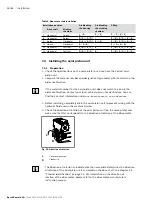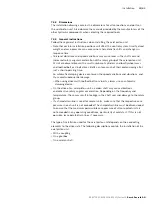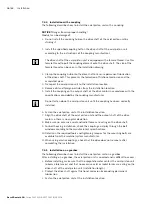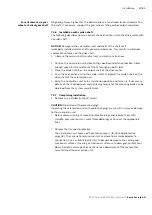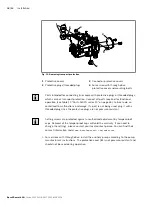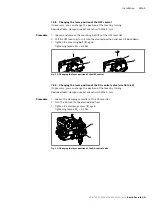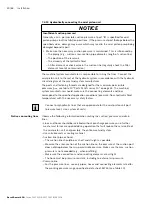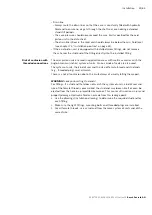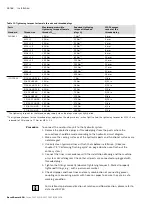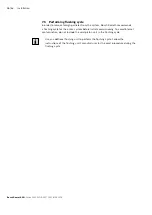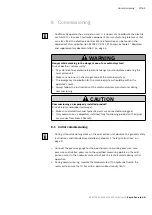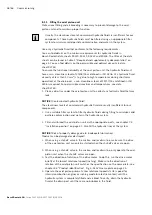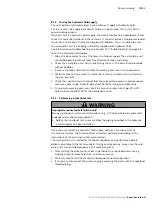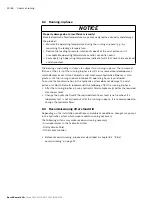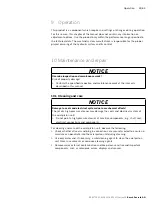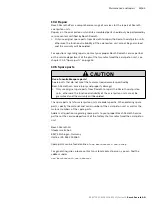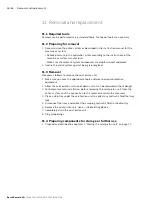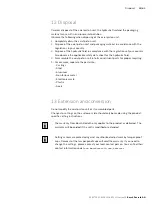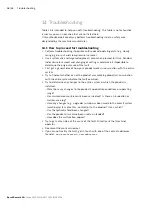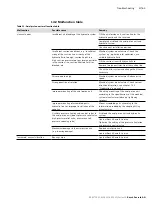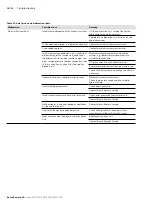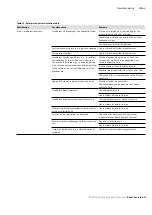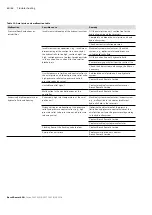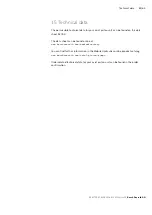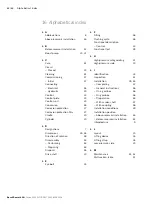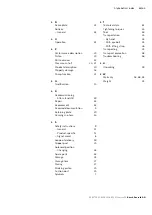
48/64 Commissioning
Bosch Rexroth AG
, Series 10 A10VG, RE 92750-01-B/06.2018
8.1.1 Filling the axial piston unit
Professional filling and air bleeding is necessary to prevent damage to the axial
piston unit and to maintain proper function.
Usually, the cleanliness level of commercial hydraulic fluids is insufficient for our
components. These hydraulic fluids must be filtered using an appropriate filter
system to minimize solid particle contamination and water in the system.
Use only a hydraulic fluid that conforms to the following requirements:
You can find details on the minimum requirements for hydraulic fluids in
Bosch Rexroth data sheets 90220, 90221, 90222 and 90225. The titles of the data
sheets can be found in Table 1 “Required and supplementary documentation” on
page 5. You can find details on the permissible and optimal viscosity in data
sheet 92750.
To ensure the functional reliability of the axial piston unit, the hydraulic fluid must
have a min. cleanliness level of 20/18/15 as defined in ISO 4406. At a hydraulic fluid
viscosity of less than 10 mm²/s (e.g. due to high temperatures during short-term
operation) at the drain port, a min. cleanliness level of 19/17/14 as defined in ISO
4406 is required. For permissible viscosities and temperatures, see data
sheet 92750.
1.
Place a drip tray under the axial piston unit to collect any hydraulic fluid that may
leak.
nOTICE! Contaminated hydraulic fluid!
The cleanliness levels of commercial hydraulic fluid are usually insufficient for our
components.
▶
Use a suitable filter system to filter hydraulic fluids during filling to minimize solid
particle contamination and water in the hydraulic system.
2.
Fill and air bleed the axial piston unit via the appropriate ports; see chapter 7.3
“Installation position” on page 31. Also fill the hydraulic lines of the system.
nOTICE! Risk of property damage due to inadequate lubrication!
Product can be damaged or destroyed!
▶
When using a shut-off valve in the suction and/or drain line, make sure the drive
of the axial piston unit can only be started when the shut-off valves are open.
3.
When using a shut-off valve in the suction and/or drain line, only operate the axial
piston unit when the shut-off valves are open.
4.
Test the direction of rotation of the drive motor. To do this, run the drive motor
briefly at the lowest rotational speed (inching). Make sure the direction of
rotation of the axial piston unit matches the specification on the name plate; see
chapter 5.4 “Product identification”, Fig. 4: A10VG name plate on page 24.
5.
Operate the axial piston pump at a low rotational speed (starter speed for
internal combustion engines or inching mode for electric motors) until the
hydraulic system is completely filled and air bled. To verify, drain the hydraulic
fluid at the drain port until there are no bubbles in the fluid.

